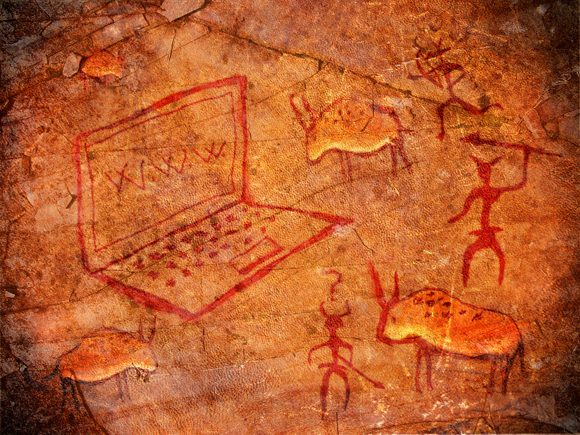Evolution of Printing
« Back to Articles

Let’s turn away from the details of modern printing for this blog post and look at a more basic question: when did we as a human race first get the idea of using written or printed communication to express, share, and record ideas? From our vantage point today, the advantages are clear: writing removes much of the ambiguity from communication, allows that communication to be shared with other parties and enables information to be anywhere the writing is, even in many places at once. Still, though, we have to wonder: whose idea was “writing” anyways? What finally became so important that someone felt the need to record it on paper (or papyrus, clay, stone, etc.)? How did the evolution of printing take place?
The answer depends on what we decide to count as “writing.” There are several options here, of which the oldest would be cave paintings found in several sites across the world. The oldest of these date back about 35,000 years and mainly depict hunts with groups of humans taking down massive animal prey. However, nobody is quite certain why these were drawn—some say the drawings were religious, others contend that they were messages to other groups—and there are, of course, no words with the paintings for explanation.
The “written word” as we know it didn’t come about until much later, between 4000 and 3000 years ago. This development happened in a few places independently throughout history, but all occurrences have one thing in common: before the written word came the written number. Strokes imprinted on clay tablets, notches in wood, or even systems of tied knots representing numbers have been in use for thousands of years as a method of keeping accounts. It was these strokes that in ancient Mesopotamia (modern-day Iraq) evolved into cuneiform, typically acknowledged today as the world’s oldest system of writing. Of course, the ancients were concerned with the security of their records, too, and so clay pieces containing number strokes and later full exchanges were baked after writing to make them both durable and unalterable, almost like a precursor to printing.
So, it seems that our ancient forebears believed that writing and “printing” gave their agreements a permanence that other forms of communication simply could not match. Even after writing expanded from numbers to words, many of the earliest written documents worldwide were business agreements. That spirit persists to this day in printed contracts, checks, and even advertisements, which present customers with an offer that the business can’t easily take back.
Clearly, the impact of writing and printing on people is nothing new, and we at ZoePrint are proud to carry that tradition forward, though hopefully our flyers, posters, newsletters and business cards are a bit lighter and cleaner than baked clay. We also believe our cheap printing is not only less costly than cuneiform tablets, but a lot more convenient too!